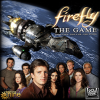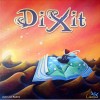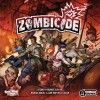

Balder
gamer level 4
1568 xp
1568 xp
followers
0
0
Use my invite URL to register (this will give me kudos)
https://boardgaming.com/register/?invited_by=balder
profile badges
...
...
...
...
recent achievements

Gamer - Level 4
Earn Gamer XP to level up!
Earn Gamer XP to level up!

Detective
Follow a total of 20 games
Follow a total of 20 games

Petroglyph
Explore select games by completing a series of exploration actions. learn more »
Explore select games by completing a series of exploration actions. learn more »

Follower
Follow another gamer by clicking "Follow" after reading a review or viewing their profile.
Follow another gamer by clicking "Follow" after reading a review or viewing their profile.
Player Stats
Critic (lvl 1)
160 xp
160 xp
Explorer (lvl 2)
605 xp
605 xp
Professor (lvl 1)
125 xp
125 xp
Reporter (lvl 1)
105 xp
105 xp
About Me
Hello!
I've been playing board and role playing games for almost 20 years, since I accidentally discovered D&D on the net.
Since that day I played many war games, card games, board games, and gaming became a big part of my life...
Today, I mostly enjoy playing games with my wife, and occasionally with my best friends.
My favourite game is probably Carcassonne, but I enjoy playing many types of games.
Balder's Followers (0)
No Followers Yet







































Village
COMPONENTS
Components are of very nice quality. The game includes the main board, farm board and coloured meeples for each player. There are wooden cubes for each influence type, cardboard trading tiles, etc… Anyway, the quality of components is great!
DESIGN
The game has really nice design. The cubes are, just that, cubes, and don’t expect too much on that front, but images are really beautiful.
RULES
In Village, a player controls a family in it’s struggle to reach the top through multiple generations. Yes, this game’s resources are different types of influence and TIME! Pretty much, anything you do, costs time, and when clock ticks, a player needs to “kill” one of his oldest members. But, fear not, even in death, many members bring fame to the family, because they are often remembered in Village Chronicle as first members of council, best craftsmen, famous travelers, etc…
At the beginning of each turn, green bag is used to take influence cubes specified by number of players, and those are randomly set on different village parts. Then, players, take a cube and do action tied to the place a cube was on. These include trading, traveling, crafting, making new family members, rising in church/council…
The game ends when either whole chronicle or graveyard (if there is not enough space in chronicle of that type) is full. Points are tallied and winner is the one who has the most!
FUN
Village is a VERY, VERY fun game… On each turn, there are so many actions the player can do, and each of those actions is very unique. During each session, a player will be confronted with tough choices that will greatly influence his later turns. And if you love a little bit of tension, church mass is a very fun mechanic, where player sends his family member into church, and at the end of each round 4 meeples are randomly drawn from black bag and put into church hierarchy. If you don’t love luck driven mechanics, you can (naturally) buy place in the mass 🙂
REPLAYABILITY
Main random element of this game (and, randomness is really important for replay value) is mostly tied to influence cubes that are put on different actions. This will not dramatically change anyone’s luck, but will definitely change how each game is played. Also, trading tiles are random, and will influence your crafting decisions. Anyway, this game has surprisingly nice replayability.
OVERALL
Aside from having great quality components with nice design, the Village is a smart, and beautiful game with many tough choices, few very interesting and novel minor mechanics, that is not too hard to learn and is thematically great for families.
9